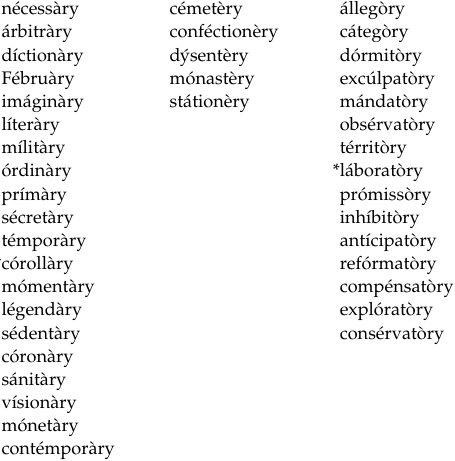

Grammar


Tenses


Present

Present Simple

Present Continuous

Present Perfect

Present Perfect Continuous


Past

Past Continuous

Past Perfect

Past Perfect Continuous

Past Simple


Future

Future Simple

Future Continuous

Future Perfect

Future Perfect Continuous

Passive and Active


Parts Of Speech


Nouns

Countable and uncountable nouns

Verbal nouns

Singular and Plural nouns

Proper nouns

Nouns gender

Nouns definition

Concrete nouns

Abstract nouns

Common nouns

Collective nouns

Definition Of Nouns


Verbs

Stative and dynamic verbs

Finite and nonfinite verbs

To be verbs

Transitive and intransitive verbs

Auxiliary verbs

Modal verbs

Regular and irregular verbs

Action verbs


Adverbs

Relative adverbs

Interrogative adverbs

Adverbs of time

Adverbs of place

Adverbs of reason

Adverbs of quantity

Adverbs of manner

Adverbs of frequency

Adverbs of affirmation


Adjectives

Quantitative adjective

Proper adjective

Possessive adjective

Numeral adjective

Interrogative adjective

Distributive adjective

Descriptive adjective

Demonstrative adjective


Pronouns

Subject pronoun

Relative pronoun

Reflexive pronoun

Reciprocal pronoun

Possessive pronoun

Personal pronoun

Interrogative pronoun

Indefinite pronoun

Emphatic pronoun

Distributive pronoun

Demonstrative pronoun


Pre Position


Preposition by function

Time preposition

Reason preposition

Possession preposition

Place preposition

Phrases preposition

Origin preposition

Measure preposition

Direction preposition

Contrast preposition

Agent preposition


Preposition by construction

Simple preposition

Phrase preposition

Double preposition

Compound preposition


Conjunctions

Subordinating conjunction

Correlative conjunction

Coordinating conjunction

Conjunctive adverbs


Interjections

Express calling interjection


Grammar Rules

Preference

Requests and offers

wishes

Be used to

Some and any

Could have done

Describing people

Giving advices

Possession

Comparative and superlative

Giving Reason

Making Suggestions

Apologizing

Forming questions

Since and for

Directions

Obligation

Adverbials

invitation

Articles

Imaginary condition

Zero conditional

First conditional

Second conditional

Third conditional

Reported speech


Linguistics

Phonetics

Phonology


Semantics


Pragmatics

Linguistics fields

Syntax

Morphology

Semantics

pragmatics

History

Writing

Grammar

Phonetics and Phonology


Reading Comprehension

Elementary

Intermediate

Advanced


Teaching Methods

Teaching Strategies
Differences between American and British English
المؤلف:
Mehmet Yavas̡
المصدر:
Applied English Phonology
الجزء والصفحة:
P169-C7
2025-03-17
221
Differences between American and British English
There are several words that receive different stresses between American and British English, which lend themselves to some groupings.
(a) The first group consists of two-syllable nouns of French origin. These words are stressed on the final syllable in American English (AE), while they receive the stress on the first (penult) syllable in British English (BE):

(b) Another group of nouns does exactly the reverse (final stress in BE, initial stress in AE):

There are also some other nouns that are longer and receive initial stress in AE, but final stress in BE:

(c) Two-syllable verbs ending in -ate are generally stressed initially in AE, but finally in BE:

However, in confláte, creáte, debáte, defláte, eláte, reláte, abáte, infláte, negáte, AE, like BE, places the stress on the final syllable.
The following two groups of words have one thing in common in that one variety has, in addition to the primary stress, a secondary stress while the other variety has a reduced vowel in the equivalent syllable.
(d) Forms ending in [εɹ̣i] (spelt -ary/-ery) and [ɔɹ̣i] (spelt -ory) receive a secondary stress on the penult in AE, whereas the same syllable has a reduced vowel in BE. For example, the word secondary is [sékəndὲɹ̣i] in AE, but [sέkəndəɹi] in BE, which can turn into [sέkəndɹi] by way of deleting the reduced vowel, and thus reducing the number of syllables to three. The following list consists of such items:

* = In addition to not having the secondary stress, these items have the primary stress on the second (not first) syllable in BE.
However, if the primary stress is immediately before -ary/-ery/-ory, as in salary, bravery, ivory, lottery, elementary, anniversary, documentary, complimentary, and infirmary, there is no secondary stress in AE either.
A similar pattern to the above list (secondary in AE, reduced vowel in BE) is obtained in words ending in -mony:

(e) The other group of words (all ending in -ile) that behaves differently in the two varieties shows the reverse (i.e. reduced vowel in AE, but secondary stress in BE):

However, prófìle, réptìle, sénìle with [aɪ] have secondary stress in both AE and BE.
The above-mentioned differences between AE and BE do not mean that other varieties have to choose between these two; they may differ in their stress pat terns without necessarily copying either of them. For example, words ending in -ate, -ize are stressed on the final syllable in Indian English, Hong Kong English, and Singapore English. Thus, we get alternáte, educáte, homogeníze, terroríze (Wells 1982). Non-reduced vowels and non-initial stress on words of more than one syllable (e.g. economic, faculty, necessary) are found in Indian English and Singapore English (Wells 1982). Suffixes tend to be stressed and function words, which are reduced (e.g. of [əv]) in other varieties, are not reduced in Indian English (Trudgill and Hannah 2002). Also noteworthy is the general tendency toward fewer vowel reductions in varieties of English spoken in Hawaii, Hong Kong, Singapore, and India, as well as in the Caribbean and African varieties, which results in more of a ‘syllable-timed’ rhythm.